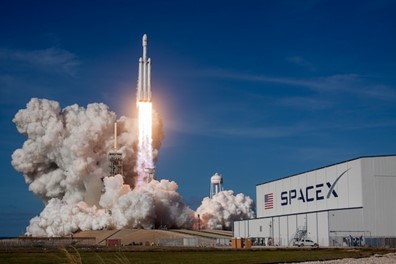Joseph Piskulic of Georgia works in the Aerospace and Defense sector with Lockheed Martin, as a Senior Manager of Command and Control Systems. In the following article, Joseph Piskulic discusses innovations within the industry influencing advancements in technology.
The defense industry has long required large investments from government entities. But beyond the protection of the people, the return on this expenditure also brings about innovations or technological breakthroughs for the Department of Defense (DoD) and beyond.
DoD funding for defense research and development (R&D) can spark the minds of scientists and engineers whose discoveries are used to advance technology in other areas, such as aerospace engineering. For example, the Lockheed Martin F-35 Lightning II, a fifth-generation combat aircraft, stands as a testament to this funding model. Its stealth technology, advanced sensors, and network-enabled operations exemplify how defense requirements lead to breakthroughs in aeronautics.
Below, Joseph Piskulic takes a look at other ways in which funding for scientific innovations in both the defense and civilian sectors comes to build a reciprocal and beneficial relationship.
Joseph Piskulic Explains How Aerospace Benefits from Defense Funding
The effects of defense funding extend well beyond the battlefield. Propulsion technology is another area reaping the rewards. Scramjet technology, capable of propelling vehicles at hypersonic speeds, has also grown out of DoD funds.
NASA’s X-43 unmanned experimental hypersonic aircraft, for instance, holds the world record for the fastest speed achieved by an aircraft, reaching nearly Mach 9.6, or 7,346 mph. Such technology opens doors for both high-speed travel and defense applications alike.
We can take these benefits all the way to space. SpaceX’sFalcon rockets and Dragon spacecraft incorporate numerous technologies borne out of defense and aerospace investments. These innovations have not only enabled successful missions to the International Space Station (ISS) but also fostered a commercially viable space industry, opening space to tourism and commercial research.
How Innovation Funding Benefits Civilians
Satellite technology, too, has surged forward due to defense sector investments. It has provided a boon to aerospace capabilities, but let’s take a case in point: the Global Positioning System (GPS). Initially a military project by the U.S. Department of Defense, it has now become an integral part of civilian life, underpinning everything from navigation to banking systems.
Joseph Piskulic says that more recent defense-driven advancements in satellite technology include nano and cube satellites, smaller and more cost-efficient than their predecessors, making satellite technology more accessible and diversely usable. The advancement of meteorological satellites has enabled better prediction and monitoring of natural disasters.
Perhaps the most obvious example of military technology with wider benefits is Internet connectivity. This fundamental pillar of modern life has been vastly improved due to the development of satellite communication technology.
In healthcare, imaging technologies initially developed for missile guidance and astronomy are now deployed in tomographic scanners, enhancing diagnostic capabilities in hospitals and clinics globally. Joseph Piskulic explains that even the ubiquitous non-stick cookware in our kitchens owes its existence to the space program – Teflon was used by NASA in heat shields, spacesuits, and cargo hold liners.
 Aerospace Innovations That Boost Defense Capabilities
Aerospace Innovations That Boost Defense Capabilities
Of course, the relationship between the defense and aerospace industries and technological innovation isn’t one-sided – technologies often cycle back to benefit defense applications.
Joseph Piskulic says that one specific example of this cross-industry fertilization can be found in synthetic-aperture radar (SAR), a technology that was initially developed for remote sensing in space exploration. But it turns out SAR can provide high-resolution, day-night, and all-weather imagery for military use, significantly enhancing the DoD’s reconnaissance capabilities.
The complex field of materials science also shares in this symbiotic relationship. For example, advancements in the aerospace industry have yielded lighter, more durable materials to withstand the rigors of space travel, driving the development of advanced composites, such as carbon fiber-reinforced polymers now used in defense.
These materials have even found their way into combat helmets to vehicle armor. In this case, aerospace innovations now provide a new level of protection and mobility for the U.S. military that has enhanced safety and maneuverability for defense personnel.
The Importance of a Symbiotic Relationship
Joseph Piskulic explains that this cyclical relationship between defense and aerospace is driven by extensive capital input from both sectors. And there’s every reason to believe that the cycle of innovation and technological progress will continue. These sectors aren’t just key players in technological innovations – they’re catalysts, pushing the envelope of what’s possible.
In a world where technological supremacy can determine the outcome of geopolitical contests, the significance of these interrelated funding benefits can’t be understated.
Summary
Joseph Piskulic notes that we should think of the aerospace and defense sectors as twin engines that drive technological advancements. They are pivotal drivers that shape our future by turning once abstract concepts into tangible realities that touch all facets of our lives.




